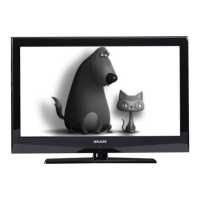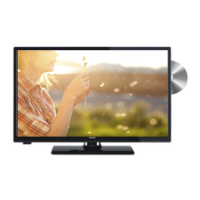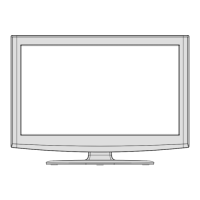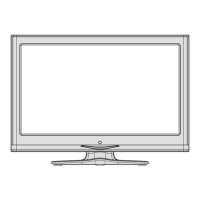Do you have a question about the Walker WP3211LCD and is the answer not in the manual?
| Screen Size | 32 inches |
|---|---|
| Display Technology | LCD |
| Aspect Ratio | 16:9 |
| Refresh Rate | 60 Hz |
| USB Ports | 1 |
| Built-in Speakers | Yes |
| Weight | 4.5 kg |
| Resolution | 1366 x 768 |
Essential safety guidelines for TV usage and handling.
Guidelines for correct power connection and cord handling.
Precautions against moisture, cleaning, and ventilation.
Safety measures for heat, lightning, and replacement parts.
Step-by-step guide to insert batteries into the remote control.
Procedure for turning the TV on, off, and into standby mode.
Tips for energy saving and environmental consciousness.
Guidelines for servicing and repairs by qualified personnel.
Details on cursor, OK, and menu navigation buttons.
Buttons for switching TV/Digital TV, PIP/PAP, Teletext.
Buttons for changing channels, adjusting volume, and mute.
Description of buttons located directly on the TV set.
Identifies and explains various input/output ports on the rear.
Details on component video and PC input connections.
Explains S/PDIF coaxial and digital outputs.
Details on CI slot, USB, headphone, video, and audio inputs.
Instructions for connecting the power cord and aerial.
Using USB devices for media playback.
Guide for connecting a computer to the TV.
Steps to connect a DVD player to the TV.
Connecting devices like VCRs or recorders via SCART.
Switching between different input sources.
Using TV buttons for volume and channel selection.
Guide for initial setup: language, country, auto-scan.
Accessing detailed program schedules and information.
Options within the EPG for channel selection.
Using analogue teletext and adjusting widescreen.
Navigating, moving, deleting, and renaming channels.
Setting channel locks and managing favorite channels.
Configuring favorite mode and scanning encrypted channels.
Setting up channel locks and maturity levels.
Securing menus and setting PIN codes.
Configuring time settings and performing receiver upgrades.
Setting preferred languages for menus, audio, and subtitles.
Scanning for channels automatically or manually.
Clearing channels and performing initial setup.
Playing media files from USB in DTV mode.
Adjusting picture settings like mode, contrast, brightness.
Setting colour temperature and Pixellence picture mode.
Adjusting audio volume and equalizer settings.
Balancing audio and configuring headphone output.
Selecting headphone sound modes and options.
Configuring audio output and virtual speaker effects.
Optimizing picture for movies and using PIP/PAP.
Adjusting picture zoom and accessing teletext.
Blue background, backlight, and menu timeout settings.
Setup for program, band, channel, colour, and sound systems.
Limited installation options available in AV modes.
Automates channel tuning and setup processes.
Selecting sources and connecting a PC.
Adjusting PC image position and picture settings.
Showing TV info and using the mute function.
Using Picture-in-Picture and freezing the image.
Adjusting picture size using various zoom modes.
Using teletext for news, weather, and information.
Maintaining the screen and addressing image persistence.
Resolving problems with power, picture, or sound.
Table of resolutions and refresh rates for PC input.
Compatibility chart for various input signal types.
Matrix showing valid PIP/PAP source pairings.
List of media file types supported by USB playback.
List of resolutions supported via DVI connectors.
Technical details: broadcasting, dimensions, power consumption.
Details on DVB-T, MPEG2, MPEG4 standards and formats.
Guidelines for safe mains connection and wiring.
Warnings about electric shock, servicing, and exposure.











